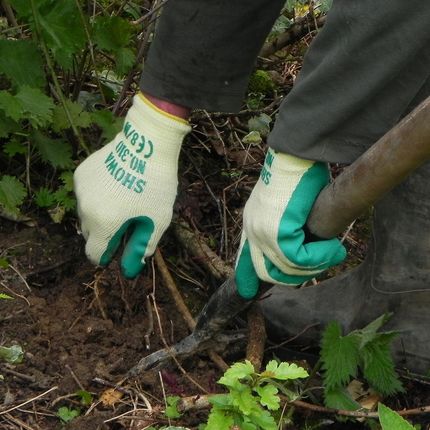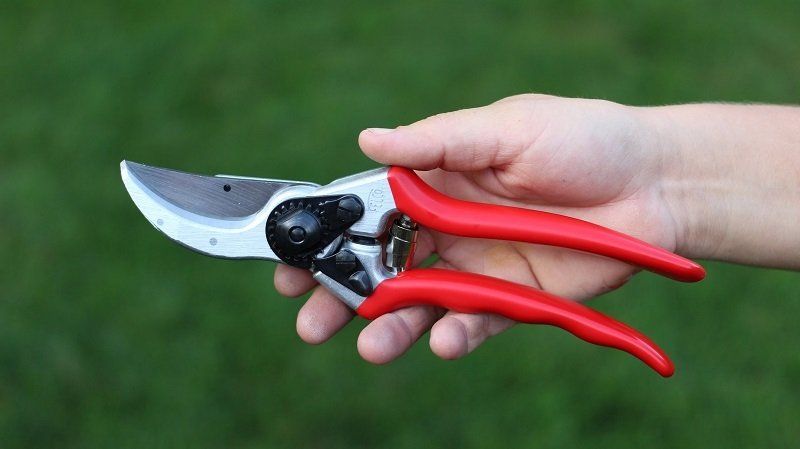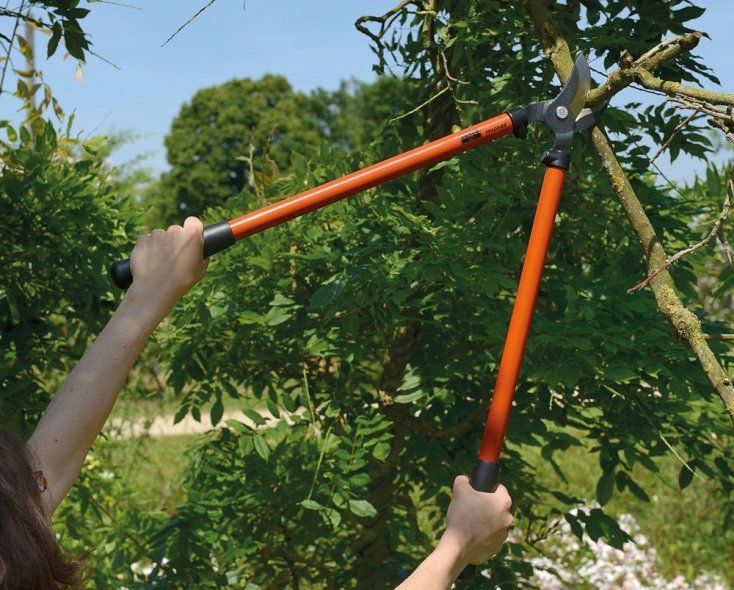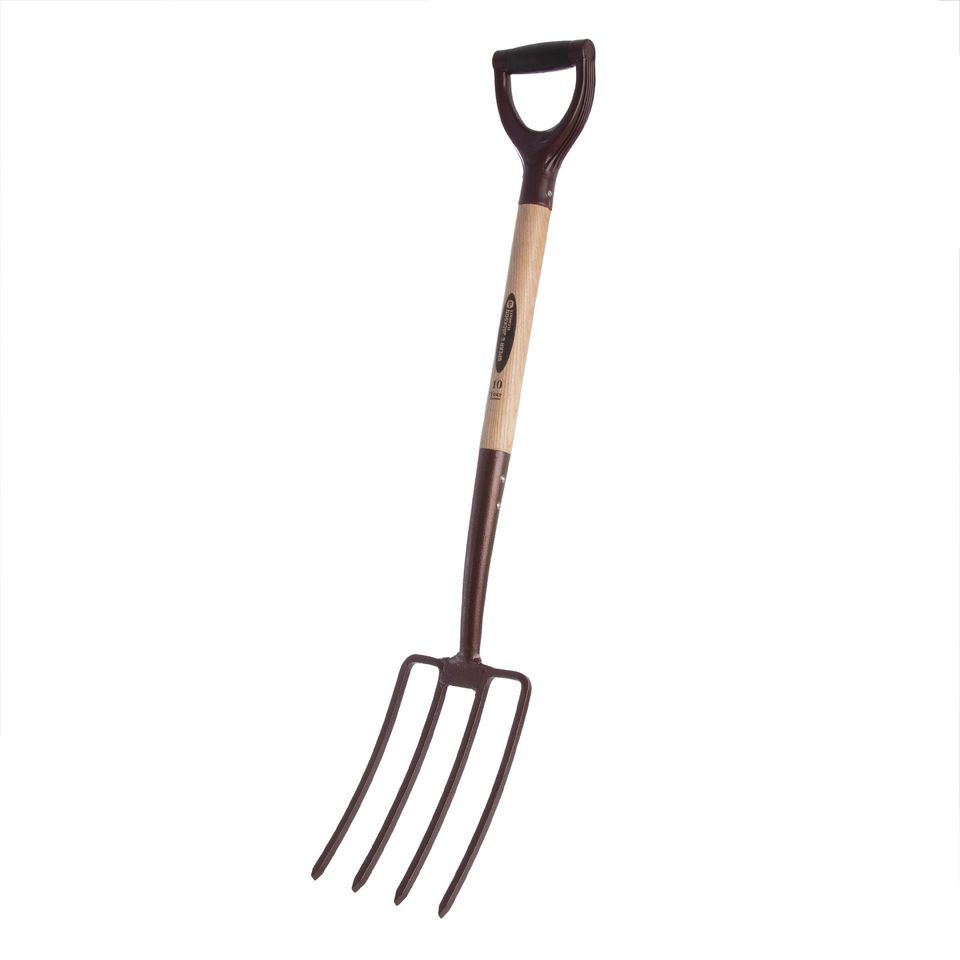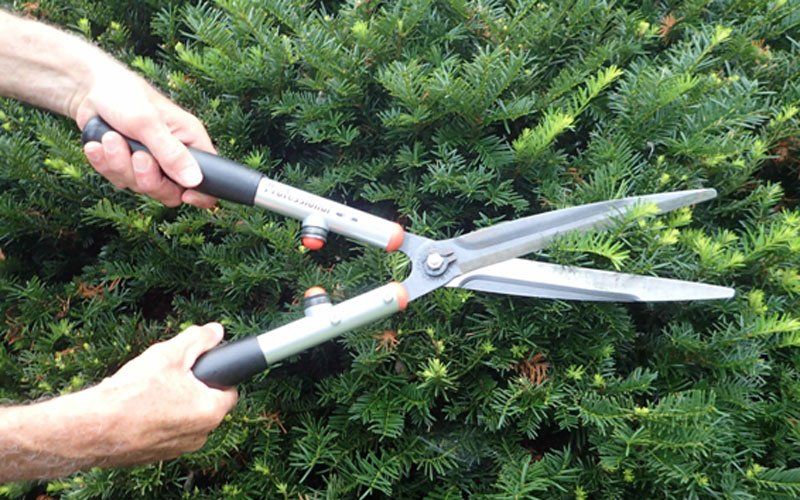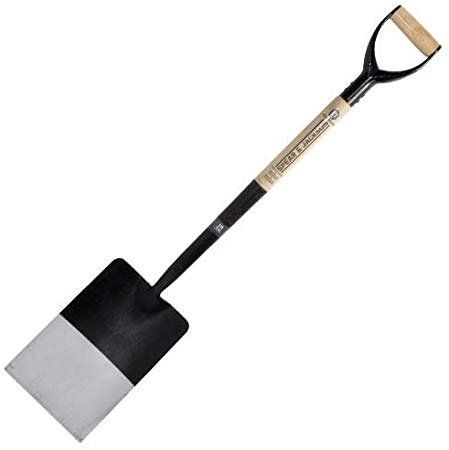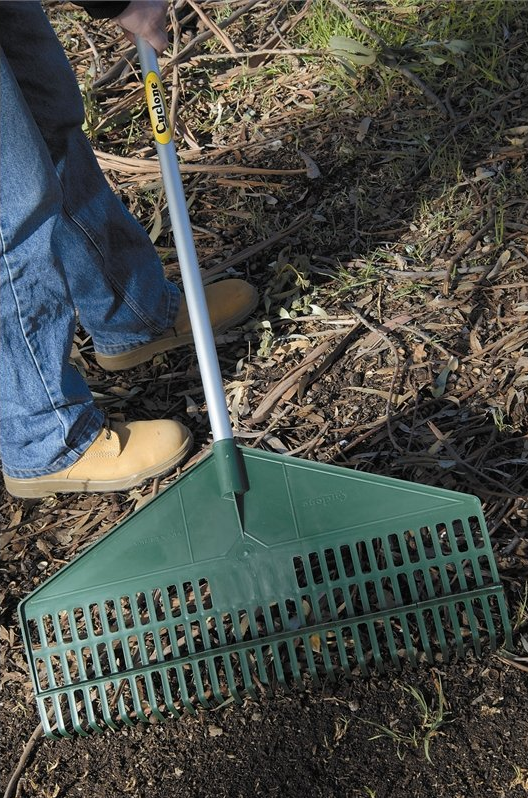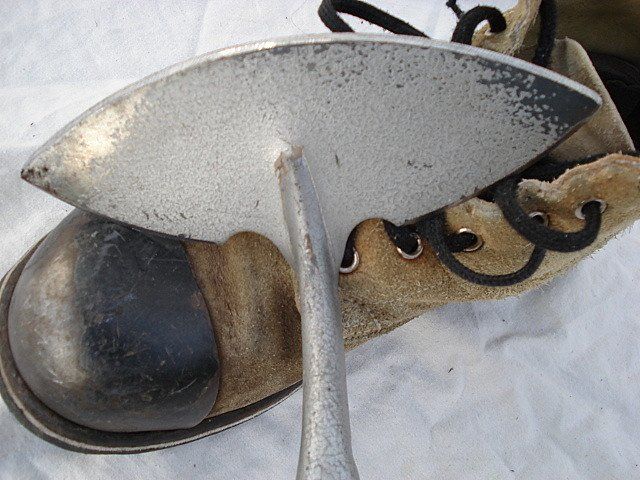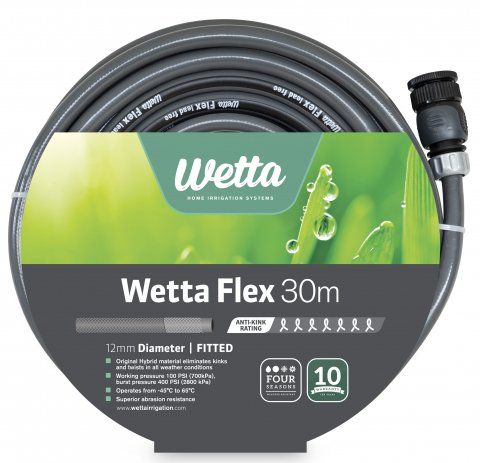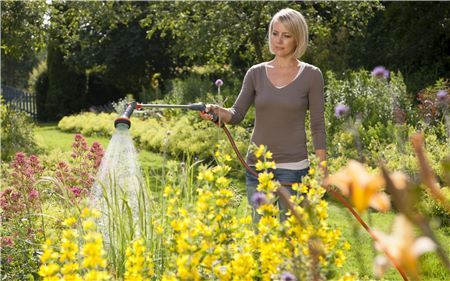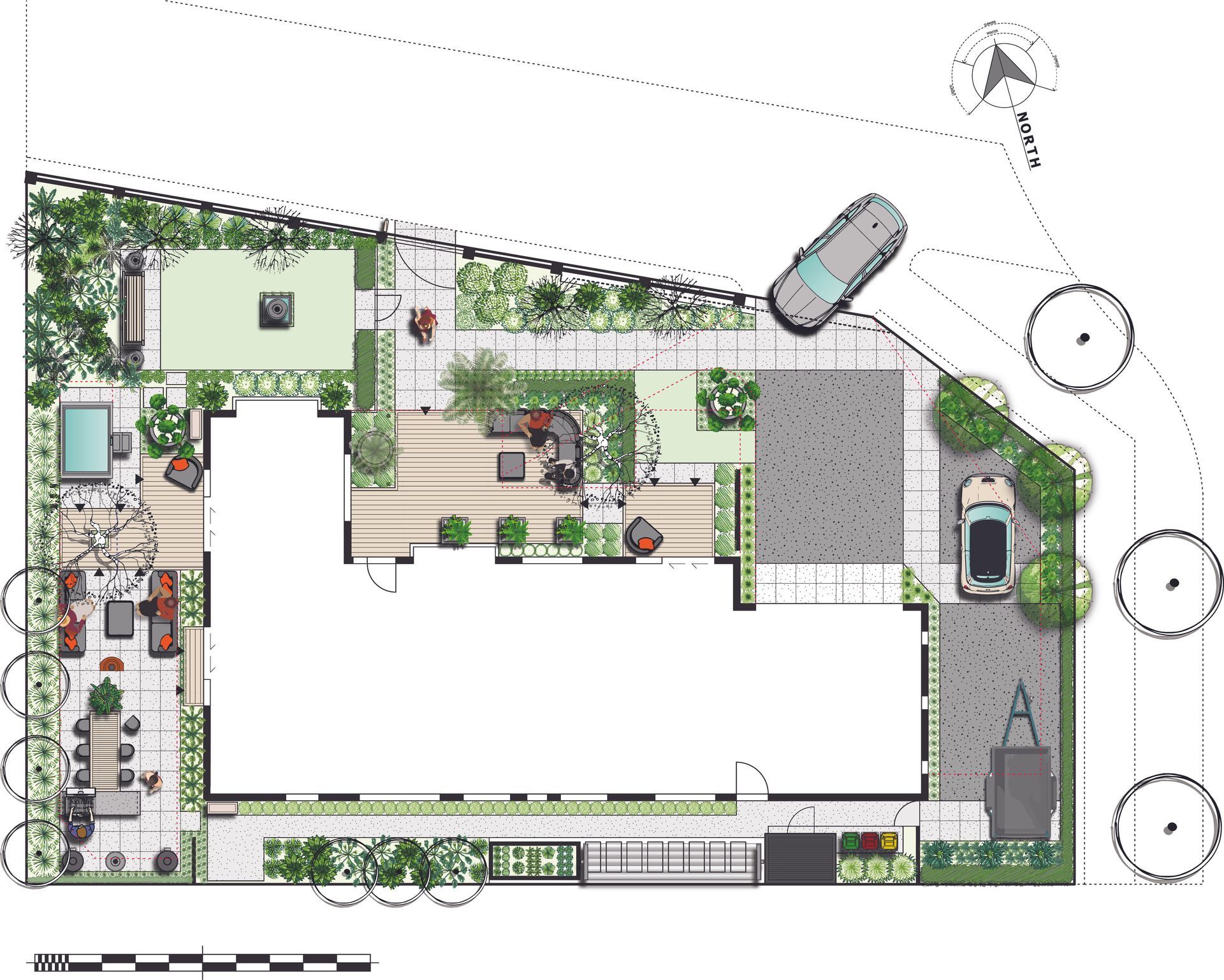Top 10 essential garden tools to maintain your EPIC landscape
Luke Robertson • 2 January 2020
Being a landscape designer is hugely satisfying...
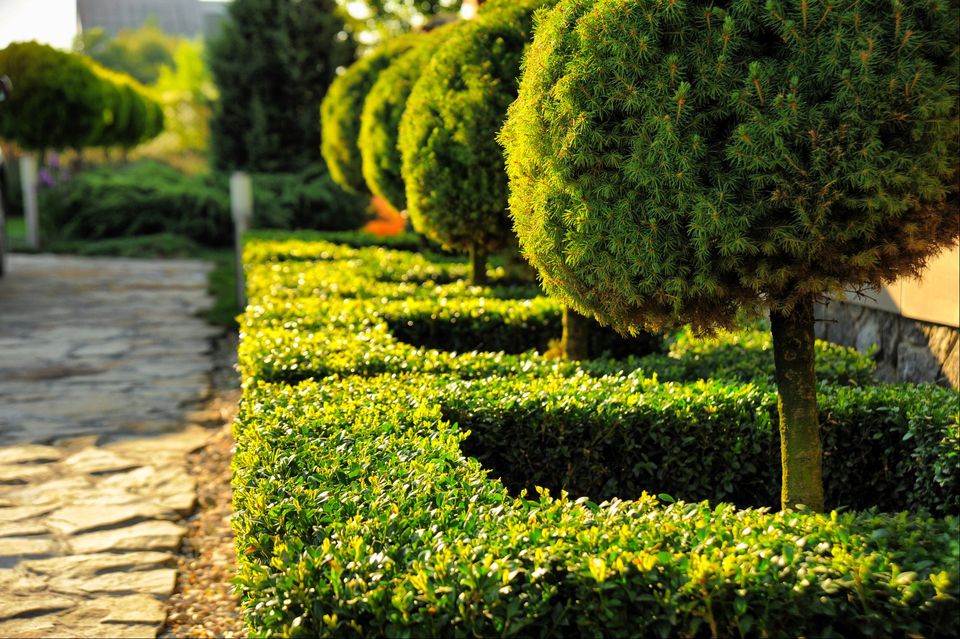
One of the most satisfying experiences we commonly come across is dealing with clients who admit they are not green-thumbed, however, by the end of the design and construction process, they have become inspired to learn how to maintain their new landscape to be the best it can be.
But what should you have in the tool shed?
It’s easy to go overboard when purchasing gardening tools and it can be overwhelming to walk into a hardware shop and know what to buy. So, to give you an idea of the essential ‘tools’ you need, we’ve put together a list of our top 10 essential garden tools you should look at purchasing to make your job easier.
Tools can take up a lot space and cost a lot of money, but staying focused on the basics can keep your shed or storage area from becoming overcrowded. There’s always bigger and better; but buying the best quality tools that your budget will allow, and maintaining them, can go a long way in getting the most out of your investment.
1. Gloves
While gardening can be a wonderful hobby, it can quickly turn into a thorny and splintery hassle without the right pair of gloves.
• Gloves should be durable but not too bulky.
• Fit is important, as poorly fitting gloves can cause blisters or result in accidents from slipping off.
• Fabrics that are water resistant, but also breathable, will help keep hands cool and comfortable.
After years working in the horticulture industry, we have tried plenty of different gloves and highly recommend the ‘Showa 310’
2. Pruning Shears
Hand pruners, also called secateurs, help reign in plants that are getting out of control and taking over. Anvil-style pruners cut with a sharp blade meeting a flat surface, similar to a knife on a board. Bypass pruners cut with a sharp blade passing by a sharp-edged flat surface, more like scissors. Anvil pruners are best for dead wood as they can cause crush injuries to fresh, green stems and branches.
• Bypass pruners are better for live plants and green wood.
• Pruners should fit easily in the palm of your hand.
• Ratcheting pruners provide increased cutting strength, perfect for anyone with reduced hand strength or arthritis.
• For cleaner cuts and less injury to plants, pruners should be sharpened regularly.
A quality pair of secateurs will be one of the best investments you will make. We highly recommend you buy the best your budget will allow as they will last longer and provide a better cut which will lead to better plant health.
3. Loppers
Another cutting tool, loppers are basically long-handled pruners used to trim hard to reach areas and cut thicker branches. The long handles provide the leverage it takes to cut through branches up to two cm’s or more in diameter. There is both anvil and bypass types, just like pruners. Handles generally range from 40-90 cm’s.
• Bypass loppers are more precise in the cut location than anvil style.
• Longer handled loppers can be heavy. Know what you’ll be cutting and how far you’ll need to reach and get the appropriate length.
• Lightweight aluminium or carbon-composite handles can be lighter.
• Like pruners, keep lopper blades in good condition and sharpen regularly.
4. Garden Fork
An efficient tool for turning soil, garden forks can dig into dense soil better than a spade.
• Forks with a slight curve to the spines are useful for scooping mulch or turning compost piles, much like a pitchfork.
• Straight tines are better for digging; great for compacted, rocky, or clay soil.
• Square tines are stronger than flat tines which can bend when they hit a rock or root.
5. Hedge trimmer
Hedges commonly form the backbone of the garden, and when trimmed regularly, they provide a great low maintenance solution for layering and garden definition.
Whilst electric or petrol-powered trimmers are available, using hand shears while the hedge is establishing is the best answer.
• Cost effective over mechanical options.
• Provide better control for precise trimming of topiary or immature hedges.
• Trimmer should be light but strong and easy to use.
• For cleaner cuts and less injury to plants, pruners should be sharpened regularly.
In our landscape design Christchurch NZ show garden, we use a ‘Spear & Jackson’ Hedge Shears.
6. Spade
These short-handled square spades
are garden workhorses. They make easy work of digging holes for plants, edging, lifting turf, and moving small mounds of dirt from one area to another. This tool can be more on the pricey side, but a good spade will last you the rest of your gardening life.
• Treads on top of the blade give a sturdier and more comfortable foot surface when needing an extra push.
• Hardwood handles are durable and absorb shock and vibration.
• Generally available with long or short handles. Longer handles provide more leverage but are heavier.
• Stainless steel heads are strong and won’t rust.
Our landscape designer, Luke Robertson, recommends the ‘Spear & Jackson’ neverbend digging spade. “A good quality sharp spade is one of the best tools you can have. When I was horticultural apprentice, I was given a brand-new spade which is still in active duty 23 years later.”
7. Leaf Rake
When leaves and debris fall, your sturdy rake is there to whisk them away. Rakes come in a wide variety of styles and sizes, but a great starter is a standard leaf rake.
• Adjustable rakes do the job of more than one tool, reaching into narrow areas or gathering large piles of leaves.
• Steel tines are stronger and may be rougher on delicate lawns than plastic tines.
In our landscape design Christchurch NZ show garden, we use a ‘Cyclone’ Super Rake found here
8. Hoe
Your type of garden will dictate what type of hoe is best for you. For typical garden maintenance and weed control, a sharp torpedo hoe is best; although a veggie garden may require a sturdy, wide hoe.
If you have perennial gardens, a more delicate touch and a thinner hoe may be required. Hoes are useful in preparing garden and flower beds and cutting down weeds.
• Look for a comfortable handle with a long reach.
• A sharp blade works better and is easier to use.
In our landscape design Christchurch NZ show garden, we use a ‘Spear & Jackson’ Torpedo Hoe found here
9. Garden Hose with Adjustable Nozzle
Water is the foundation of your garden’s life and it’s important that your garden hose can reach and spray every area. We highly recommend you purchase a quality hose which is kink and knot resistant as there is nothing more frustrating than a kinked hose. An adjustable nozzle puts you in control of the water pressure and spray radius.
• Estimate the amount of length you will need with your hose before buying one.
• Hose length will affect water pressure – the longer the hose, the lower the resulting pressure.
• Vinyl hoses are lighter weight and less expensive, but kink easier and don’t last as long as rubber construction.
• Store your hoses coiled up and out of direct sunlight. Storing with kinks in them can result in weak spots.
In our landscape design Christchurch NZ show garden, we use the ‘Wetta’ Flex hose:
10. Watering Wand
Give your plants a gentle rain shower with a water-breaking wand. The extended reach is also helpful to get to out-of-the-way containers, hanging plants, or the back edges of borders. Watering wands come in a variety of lengths.
• Choose an appropriate length for your needs – longer for high hanging baskets; shorter for tighter spaces.
• Built-in shut off valves in the handle conserve water and allow you to adjust the flow.
In our landscape design Christchurch NZ show garden, we use the ‘Gardena comfort spray lance’:
Epic News

When people think about adding value to a home, they usually envision kitchen remodels, bathroom upgrades or fresh paint. But one of the most powerful—and often under-appreciated—ways to increase your property’s worth lies outside, in your landscape. A well-designed garden, outdoor living spaces, and smart use of planting don’t just look beautiful—they pay off. 1. The Value of First Impressions & Street Appeal The very first impression a potential buyer (or passerby) gets of your home often comes from the exterior - your front section and entryway. This “street appeal” can influence how people perceive the rest of the house before they even step inside.
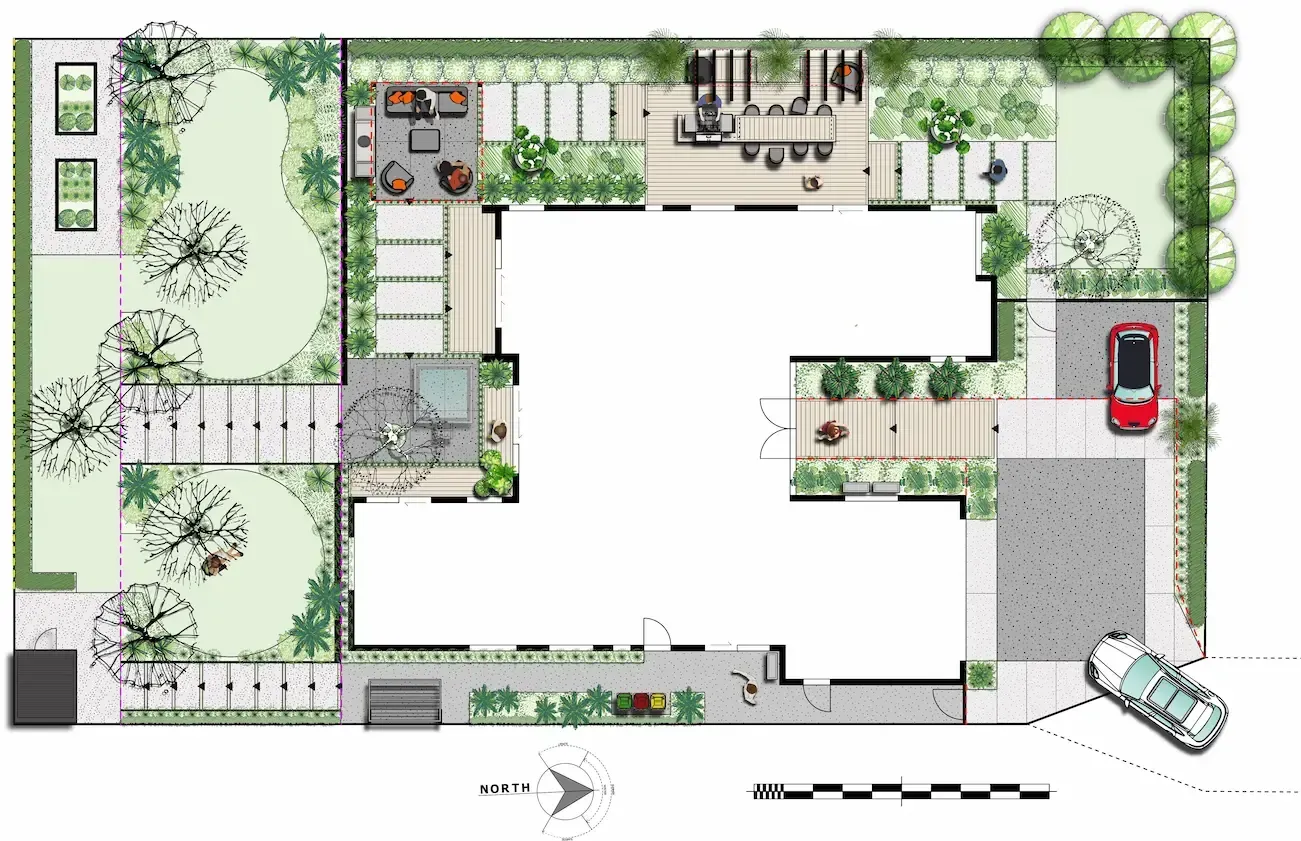
At Epic Landscapes, we understand that every outdoor space is unique, and so are your design needs. We also know that many of you are looking for more flexibility when it comes to the landscape design process. That's why we're excited to introduce three new landscape design packages, each created to provide a tailored approach to your project, from simple garden refreshes to a complete outdoor transformation. Whether you're starting with a blank canvas or revitalising an existing space, these packages are designed to give you peace of mind and the flexibility to choose the right level of detail and investment for your home. Backed by our team's deep expertise—with over 28 years of experience and extensive knowledge in everything from horticulture and plant selection to hardscape construction—each package guarantees exceptional results! 1. The Signature Concept Plan: Our Most Comprehensive Service For those who want a complete, polished plan with every detail carefully considered, the Signature Concept Plan is for you. This is our most comprehensive service, a two-stage design process with full 3D visualisation that ensures a ready-to-implement design. This package is ideal for maximising the value of your property, providing you with the confidence that your outdoor space will be professionally and thoughtfully designed. Here is a closer look at our two-stage design process: An on-site consultation to discuss your vision and goals. We'll develop a detailed design brief and proposal to capture your requirements. Stage One: Preliminary Design & 3D Modelling A site measure with accurate measuring tools. CAD-drawn colour presentation plan illustrating all design features, material selections, levels, lawn, and garden layout 3D modelling to provide a realistic visual representation of the proposed design Comprehensive supporting documentation to clearly convey the concept and vision A presentation of the design to the client. One complimentary round of revisions to the preliminary design
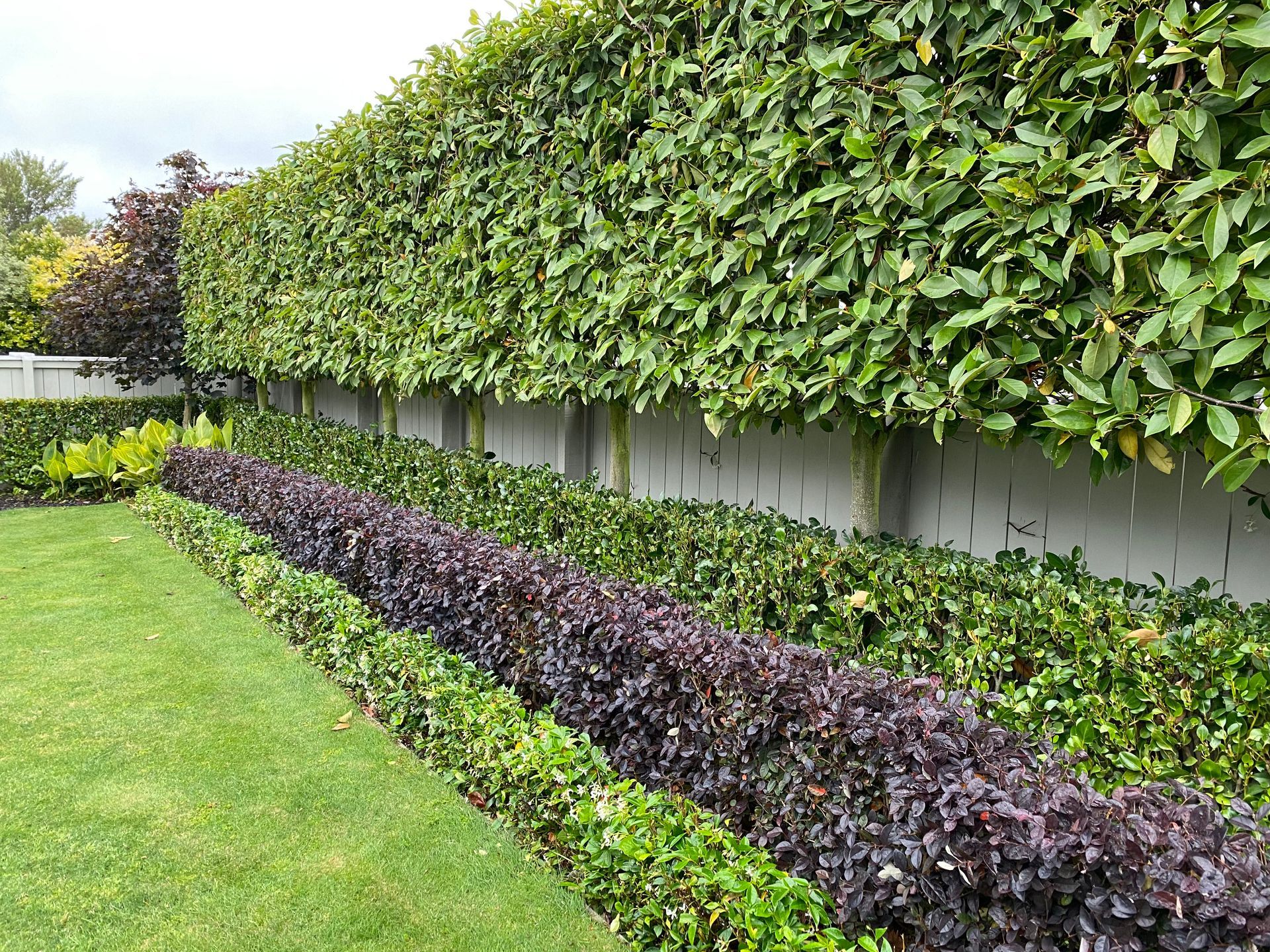
At EPIC Landscape Design, we believe in crafting outdoor spaces that are not only beautiful but also functional and reflective of your style. One of the timeless elements we often incorporate into our designs is the pleached hedge — a sophisticated feature that offers privacy, structure and seasonal interest. Stepping into our show garden, we’ve created a guide to trimming and training a pleached Michelia hedge. What is a pleached hedge? A pleached hedge is a “hedge on sticks”. Pleaching involves training trees to form a flat, connected screen above a clear stem. It's an elegant solution for creating privacy without sacrificing space, ideal for urban gardens in Christchurch and beyond. Want to block out your neighbours? This is the perfect solution! Tools you'll need: Sharp secateurs. Pruning saw (for thicker branches). Hedge shears. Ladder (for taller hedges) – we strongly advise you ask someone to hold the ladder whilst you are using it. Gloves and eye protection. How to grow and shape your pleached hedge Please note: this guidance is based on Michelia, but can be transferred to other plant varieties. Get in touch if you’d prefer a 1:1 on-site consultation. Initial training Once your Michelia has been planted, let it grow (image below of young trees planted).

Epic Landscape Design's Luke Robertson was asked his advice on how to landscape a lifestyle block by www.stuff.co.nz. Check out the article here If you need assistance with your lifestyle block on indeed any landscape design project in Christchurch or Canterbury please don't hesitate to contact Luke !
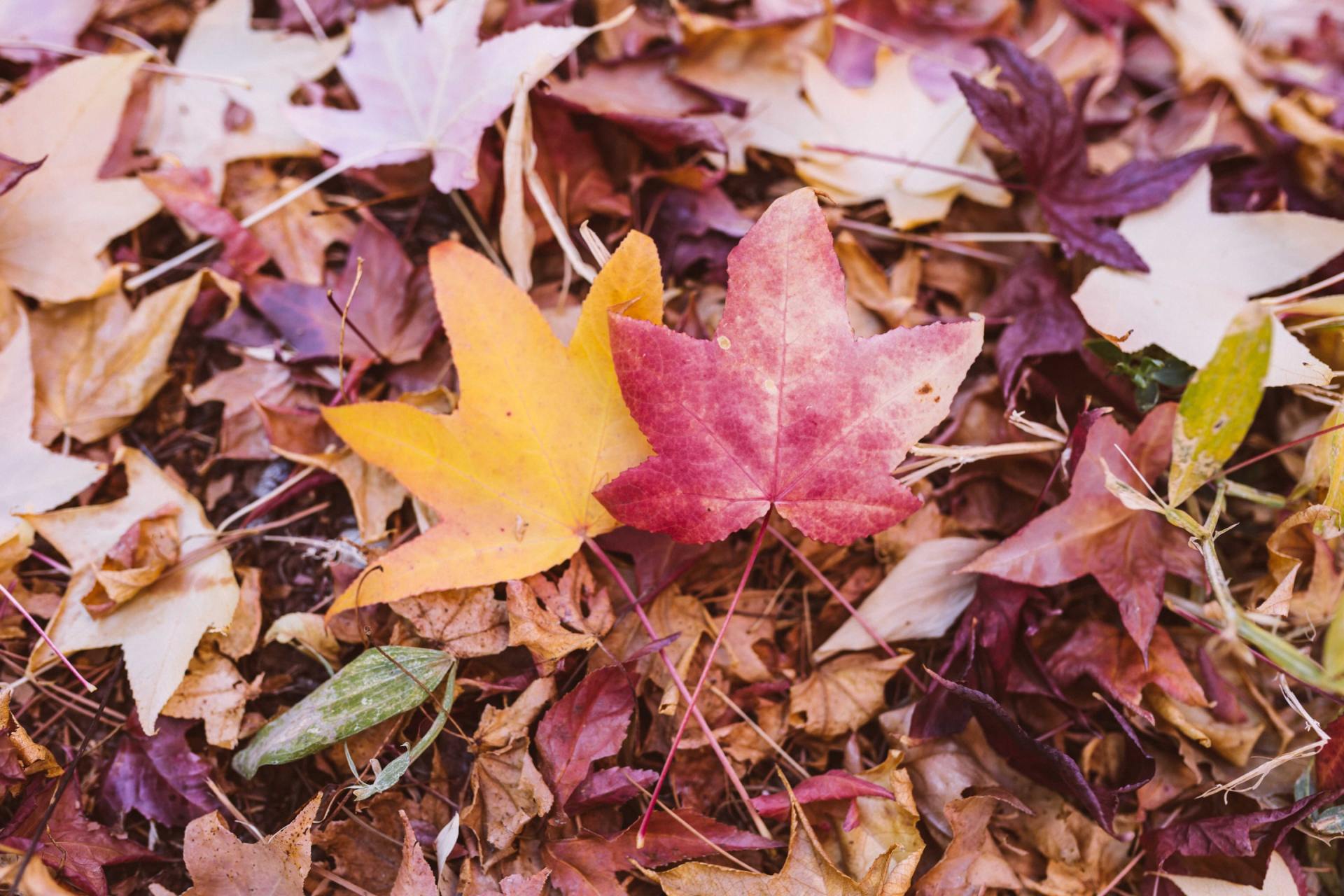
Gardens are an important feature of any home, but many homeowners fall into the trap of concentrating on spring and summer flowering plants and shrubs to bring them joy. A well-planned garden should give you year-round satisfaction, and autumn is a season to enjoy a blaze of spectacular colours. Now is the time that you need to start planning your landscape design to introduce trees and shrubs for autumn colour. The Christchurch and Canterbury climate does not suit all types of trees and shrubs, so it’s important that you take advice before getting busy buying and planting. Here’s a selection of some easy to grow trees and shrubs that can brighten your autumn garden. These are just a few of the hundreds available, and we can talk about your many options during an EPIC landscape consultation .
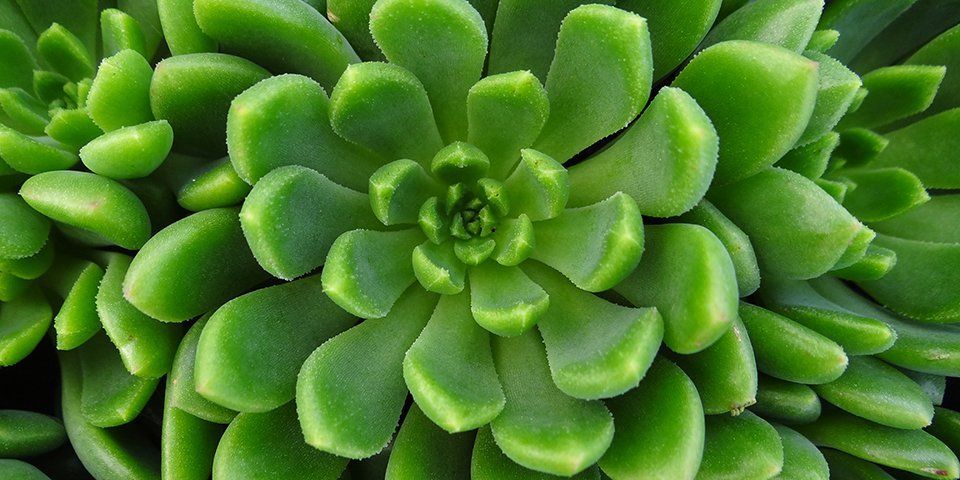
Drought tolerant gardening is the process of landscaping or gardening that reduces or eliminates the need for supplemental water from irrigation. It is promoted in regions that do not have accessible, plentiful, or reliable supplies of fresh water and is gaining acceptance in other regions as access to irrigation water is becoming limited. Plants whose natural requirements are appropriate to the local climate are emphasised, and care is taken to avoid losing water to evaporation and run off. The specific plants used in drought tolerant gardening depend upon the climate. Drought tolerant landscaping is different from natural landscaping because the emphasis is on selection of plants for water conservation, not necessarily selecting native plants. With recreation time at a premium, and a growing global concern for the supply of water, savvy gardeners and designers are adopting drought tolerant principles into every part of their landscape design. Until recently, drought tolerant plants and designs have most commonly been a feature around commercial sites, roundabouts and traffic islands. As water conservation awareness grows, drought tolerant landscape design is catching on – particularly in regions like Central Otago, Canterbury and wind windswept coastal areas of New Zealand. The trick to drought tolerance is choosing a landscape designer who can select plant species that are appropriate for your climate. Natives are an obvious choice, as they naturally grow in the local conditions, however, introducing exotic species into the design can achieve stunning looking gardens. A mix of native and exotic species will provide great contrast of colours and textures creating a more visually attractive design with more seasonal interest.
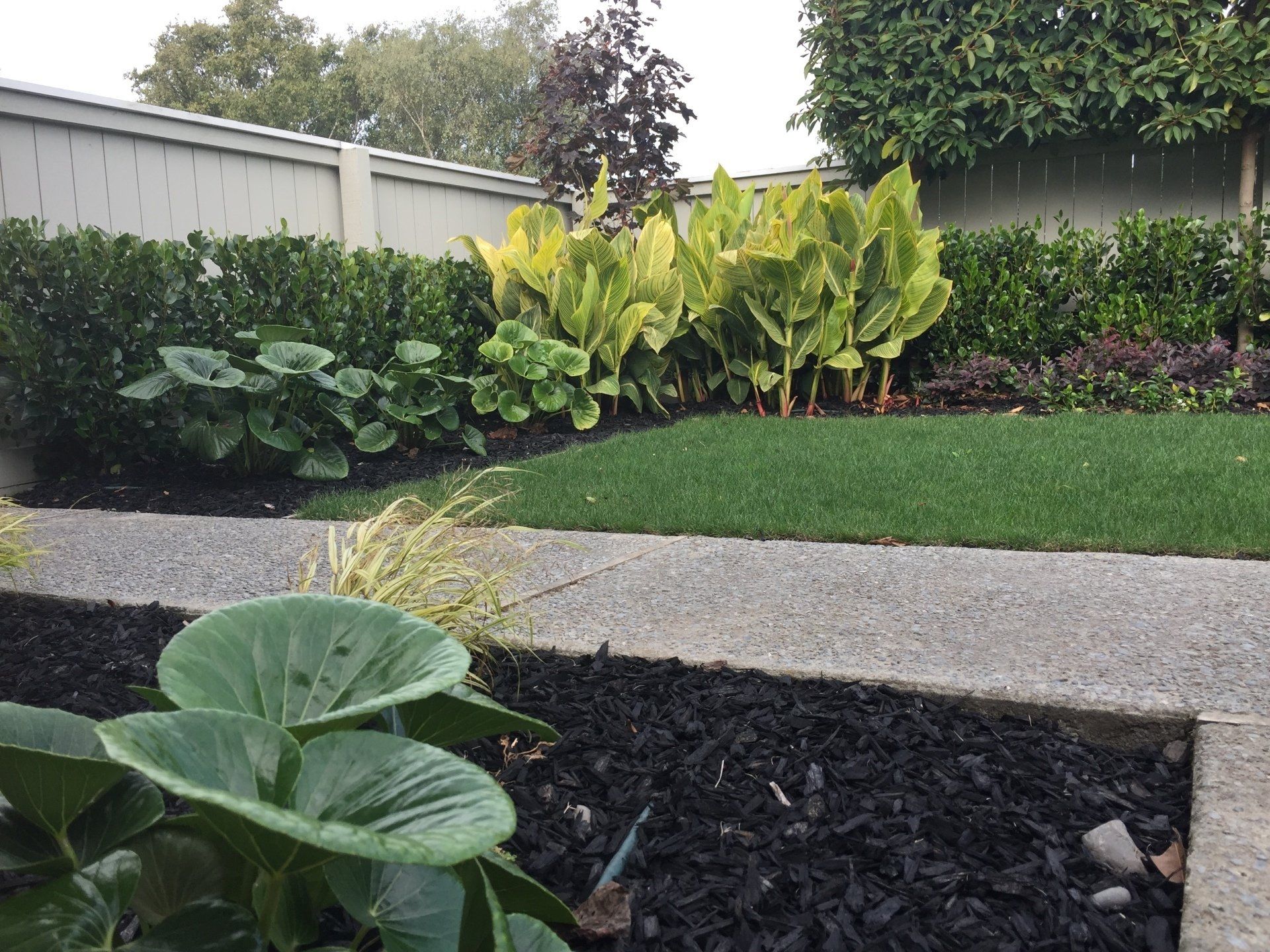
As a landscape designer in Christchurch, Ligularia reniformis is one our our favorite plants to use as it provides stunning colour and texture to the garden. It does have one draw back which is winter but Don’t panic its totally normal for your tractor seat plants to suffer a little over winter. The frost is what has caused the damage and your plants will naturally grow back in the springtime. In their native environment these plants are winter dormant. The Christchurch climate is borderline for them and dependent on their placement at your property they will either hibernate over winter if they get frosted or too cold, if they are protected they will continue to look great all year round. If your tractor seats do get frosted its best to leave the burnt foliage on for as long as you can bear looking at it as it will provide some protection to the plant for the remainder of winter. In springtime cut the damaged foliage back to ground level and you will soon see the new growth starting to appear. Once you have cut the damaged foliage off we recommend applying a good 12 month slow release fertiliser and a child and pet friendly slug bait to reduce any damage which may occur.
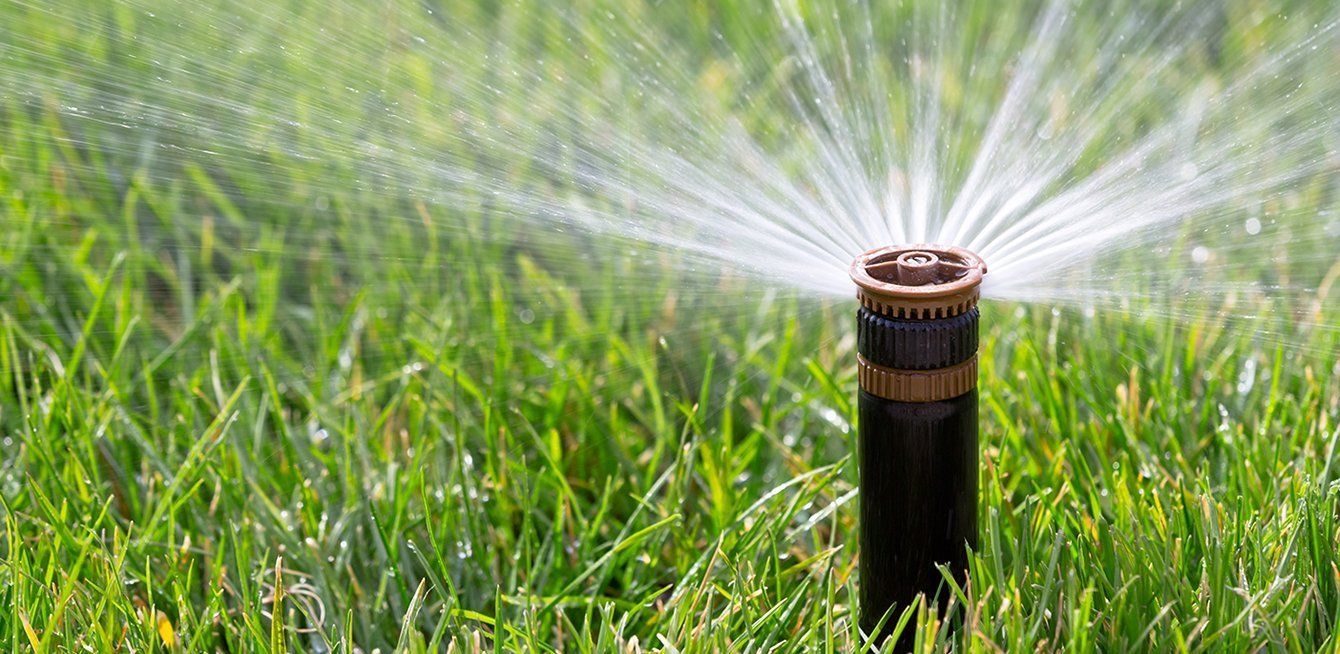
With the arrival of spring, many people are starting to get their gardens and outdoor spaces ready for summer. The influx of warmer weather and a dry winter here in Christchurch has meant many gardens require regular irrigation to encourage growth and thrive in our drier climate. I am often asked by clients, how often should you water your gardens and lawns to achieve good growth and plant health.

